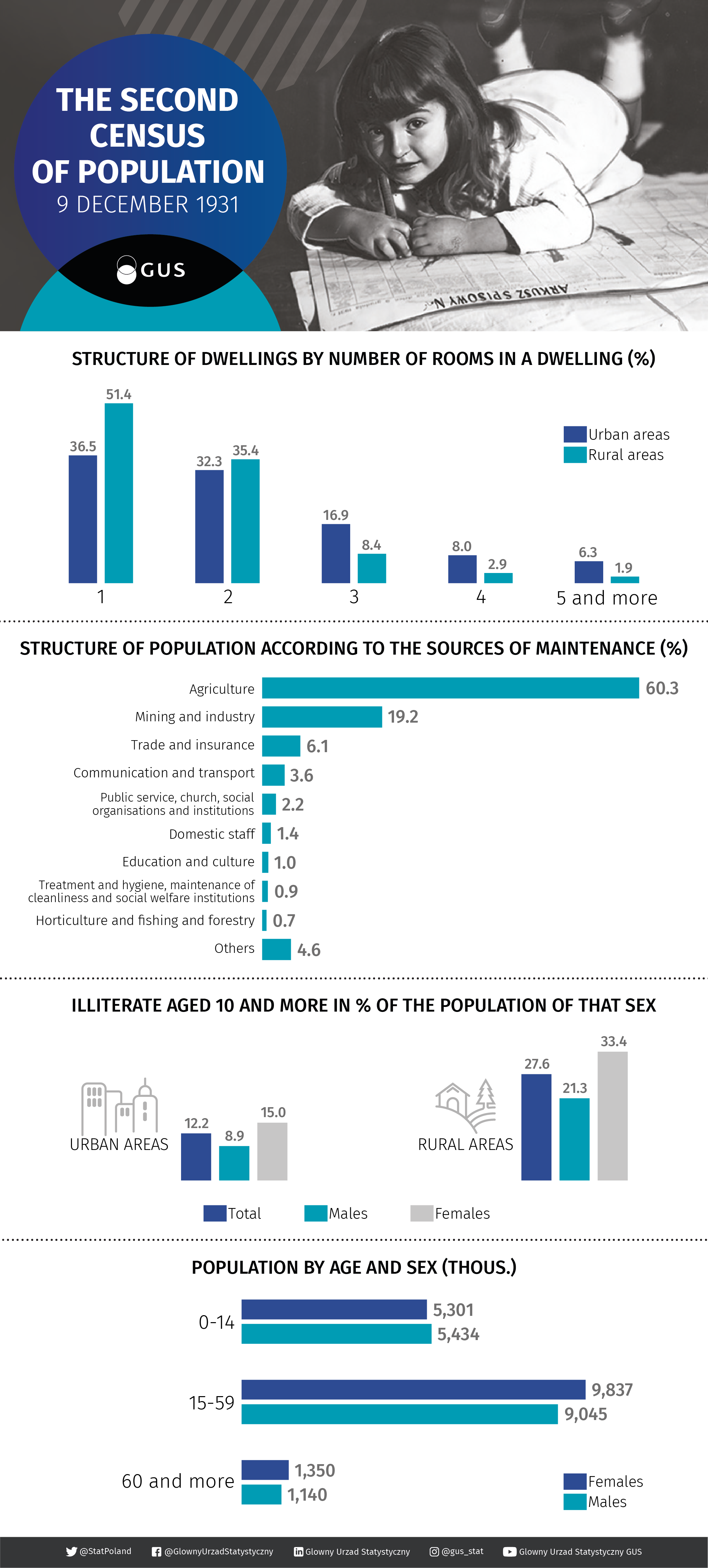90 years ago, on December 9, 1931, Statistics Poland conducted the second census.
90 years ago, on December 9, 1931, Statistics Poland conducted the second census.
Thirteen years after Poland regained independence, on December 9, 1931, on the basis of the Act of October 14, 1931, the second general population census was carried out. By order of the Council of Ministers of September 2, 1931, its scope, organization, legal principles, duties and tasks of the census services were determined. Most of the solutions were a continuation of the solutions applied during the first census of the Republic of Poland on September 30, 1921.
The scope of the study was related to demographics, occupations, housing, households, real estate and buildings, and inhabited cities. Religion and mother language were also asked. Compared to the first census of 1921, some changes have been made to the survey, for example the question of nationality has been removed and the question of literacy added.
More importance was attached to the tasks, responsibilities and powers of the census commissioners (today's enumerators). In 1931, each census commissioner took over as chief census commissioner, and also received an ID card, which means that the census services were "duty civil servants" that were protected by law. The data they collected was top secret in terms of statistics.
The employees involved in the census work in 1931 - just like us today - attached great importance to the popularization of the study. Hence, the leaflet "What will the second General Census of Population Give us?" appeared in circulation. It was a skilful combination of information about the results of the 1921 census, explanations for the 1931 census and the promotion of the very idea of the general census.
The first provisional results of the 1931 census were published by Statistics Poland in a brochure on April 5, 1932. It contained data on the number of inhabitants of cities over 10,000 as compared to the data from the 1921 census.
The basic study from the 1931 census covered the issues of housing, households, population and professional relations and was published for all voivodships and the largest cities in Poland (Warsaw, Cracow, Lviv, Vilnius, Poznań and Lódź).
As part of the publications issued by Statistics Poland after the census of 1931, there were, among others: a statistical analysis "Housing", the publication "Properties and buildings in cities" or the publication "The Origin of the People of Lviv" by Edward Tomaszewski.
The final results were published in the series of publications "Polish Statistics". The administrative division was applied on January 1, 1933 (for the central and eastern provinces) or on August 1, 1934 (for the remaining provinces). Publishing of the series began in 1936 and was interrupted by the outbreak of World War II.
39 volumes with detailed results of the 1931 census are now available at the Central Statistical Library, also online: https://cbs.stat.gov.pl/.
The data collected during the census of 1931, covering the issues of language, religion, education, as well as demographic and labour market, constituted a wealth of cognitive material, with a value difficult to overestimate for the management of the reborn state.
You can read more about the history of the censuses at: https://stat.gov.pl/portal-edukacyjny/historia-statystyki/historia-spisow-powszechnych/


